NOTE : I originally wrote this article for the STM Forum, but since I need to cover this topic here on my blog too, I am re-posting it for everyone instead of writing it again from scratch, which would be a waste of my time. Enjoy 🙂
The affiliate business, just like any other business for that matter, uses it’s own vocabulary and every aspiring affiliate needs to learn at least the basic terms in order to crack the code. SO I decided to write a post about these terms and explain them in a detailed way. The list will be long so sit tight 🙂
Let’s start with terms related to “OFFERS”.
OFFER – this is the product you will promote, it can be a tangible product or a service.
LEAD – Lead is a prospective buyer of a product or service. For example – you register for free at some dating site, so now you are a LEAD that showed interest into meeting new people.
LEADGEN – Offers that collect some kind of information about the customer in exchange for some benefit or access to a service. Majority of all OFFERS are actually LEADGEN offers, this means we the affiliates are delivering future customers (LEADS) to advertisers based on certain criteria they specify – interests, age groups, niche/vertical.
SOI – Single Opt In – these offers require 1 action from the user to be completed. Usually it is filling out a form or entering an email address.
DOI – Double Opt In – these offers require more than 1 action from the user to be completed. Originally, this concept required to enter and email address (1.step) and then clicking a confirmation link in the “welcome” email (2.step). These days there can be more requirements, for example filling out a profile, defining interests, uploading a photo etc …
PPS – Pay Per Sale – These offers pay a straight amount of $$$ per conversion.
REVSHARE – These offers will pay you certain % of a sale. These are often REBILLS or ECOMMERCE offers.
MAINSTREAM/ADULT – basic qualifications that determines if an offer can be promoted to adult traffic or not. Adult traffic is traffic on porn/erotic sites.
VERTICAL – this is the type/category that an offer falls into, sometimes the term NICHE is used too. An example of a vertical would be : app installs, dating, sweeps …
ECOMMERCE – this is basically a large VERTICAL that deals with tangible products. So pretty much any e-shop falls into this category. Two most popular platforms used by affiliates are Shopify and Teespring.
REBILLS – this can be a wide range of products across many verticals, both tangible and service/info products. The basis principle is a repeating charge to the customer. The billing cycle often starts with a free/trial membership and then recurs at a set rate every 30 days for example.
NUTRA – another large VERTICAL, these are health suplements, diet, vitamins, skincare products etc… There are also ADULT products in this vertical – muscle, penis pills … NUTRA offers can be a straight sale or REBILL based.
SWEEPS – products that give the user a chance to win something. The most popular prizes these days are iPhones and other smartphones or shopping vouchers. SWEEPS can be either LEADGEN (SOI or DOI) or PIN Submit offers.
DATING – One of the evergreen VERTICALS, dating can be both MAINSTREAM and ADULT. These are mostly SOI/DOI LEADGEN Offers – users get free access to the members area, but when they want to contact someone they need to pay a monthly fee. So the dating business model is actually based on REBILLS. These offers are also available as REVSHARE or PPS.
APP INSTALLS – this is a mobile vertical, conversion happens when the user downloads some application for their smartphone. There can be more requirements like : open the app, use it for some time… Apps can be downloaded both from official stores like google play or apple appstore or from alternative stores for android.
CONTENT BILLING – these offers give the paying user access to some members area when they can download some content, usually videos, ring tones, wallappers or games.
PIN SUBMITs – These are primarily aimed at mobile phone users, because the billing is done via premium SMS charges. That’s why they are also called CARRIER BILLING offers. This is a very popular billing method covering a wide range of VERTICALs and all kinds of offer categories. These can be SWEEPS, APP INSTALLS, ANTIVIRUS …
1 Click/ 2 Click / MO Flow – These are all PIN SUBMIT offers, but all with a different registration/subscription process. “1-Click” takes just 1 click on the Agree button, “2-Click” is like a DOI so one more confirmation is needed. MO-Flow means you have to type the SMS yourself and manually send it to some premium number. 1-Click converts the best, MO is the worst.
SURVEYS – these are similar to SWEEPS, sometimes they are actually mixed into one. So the user has to fill out a survey in order to get a chance to win something. The original SURVEY offers compensate the users for their time with a small payment. The payment serves as an INCENTIVE for the users to actually mess with the SURVEY form.
INCENTIVE – This is a specific approach to getting user engagement. These offers actually give something to the users to make them do something in return. The compensation can be a small payment, some freebie or some virtual currency. Virtual currencies are widely used these days, since the rise of mobile games. I’m sure you have seen this many times in form of watching an ad in exchange for a few diamonds, or downloading some application to get some gold nuggets in the game you were playing … the options are endless. Offers based on INCENTIVES usually pay less and such “traffic” is of lower quality.
INFO PRODUCTS – Clickbank network is a typical representative of the INFO PRODUCT vertical. They have e-books and guides for pretty much everything you can think of. These products are mostly using the REVSHARE or PPS payouts model.
PUA – Pick Up Artist – this is a specific category within the INFO PRODUCT vertical. These are usually promoted with quite funny VSL (Video Sales Letter), so I think they are worth mentioning just because of that 🙂 This products are ADULT in nature and used to work well on adult sites.
GAMBLING/CASINO – another huge VERTICAL that is also ADULT friendly. I don’t think it needs more commentary.
PAY PER CALL (PPC) – These offers pay for each phone-call that meets some conditions – usually certain duration, so the prospect might not hang up sooner than a given amount o seconds. These can be all kinds of LEADGEN type offers resulting in the sale of some product/service or a “premium number” call, that bills the user per minute – these are the infamous TECH SUPPORT offers for example.
Let’s continue with terms related to TRAFFIC.
The following text was written mostly with PAID traffic in mind, so the choice of terms reflects it.
THE BASICS
TRAFFIC – these are actually the surfers, eyeballs, users … whatever you name it, it’s still the same – visitors that see our ads and landing pages.
TRAFFIC NETWORK – we buy our TRAFFIC here. Traffic networks serve as a monetization method for the site owners, by selling their advertising space to those who are interested.
AD EXCHANGE – another name for a traffic source that has their own publishers, the big ones do not let affiliates bid for their traffic tho, they need to access their inventory through a DSP.
DSP/mDSP – Demand Side Platform or mobile Demand Side Platform – these are also traffic sources in a way, however they do not have their own publishers. They rather offer access to large ad exchanges that you can buy traffic from, by using the bidding interface of the DSP.
PUBLISHER – this is the one who has traffic to sell, originally these were the people who ran their own sites and got the traffic by publishing content – hence the name “publishers”.
ADVERTISERS – people who want to advertise something – in our case it’s people who want to buy the traffic/placements to get exposure for some products or services.
NOTE! We, the affiliates, can be both advertisers and publishers. When we are looking for traffic to buy, we are the advertisers, because we want to buy the traffic. Once we have the traffic and want to promote some offer with it, we are becoming the publisher.
BASIC VOCAB :
CTR – Click Through Rate – Measured in %, this tells us how many clicks we had from 1000 views of something (usually a banner). A CTR of 1% means 10 clicks from 1000 views.
LP CTR – Landing Page CTR – how many people actually clicked through our landing page. Calculated the same way as CTR.
EPC – Earning Per Click – how much revenue each click generated on average. Calculated by dividing the total revenue by number of clicks. These are usually Landing Page clicks.
EPV – Earning Per Visit – how much revenue each initial visit generated on average. Calculated by dividing total revenue by number of visits.
Example : Let’s say you are sending traffic to a landing page, you buy 1000 hits from a traffic source and you have a LP CTR of 30% – so 300 LP clicks go to the offer – and you make $100 revenue this way. Your EPV will be $100/1000=$0.1 and your EPC will be $100/300=$0.33.
CPC – Cost Per Click = how much you paid for a click at the traffic source.
CAP – usually it is the impressions cap, which means how many times will a banner or POP be served to the same surfer in a give time frame. 1/24 means 1 impression in 24 hours.
DAILY BUDGET – how much $ you are willing to spend on a campaign per day, sometimes its also called the daily cap, so don’t confuse it with the impressions caps.
PPC – Pay Per Click – this is a pricing method, you pay certain rate for every click you buy.
CPM – Cost Per Thousand Impressions (usually) – another pricing model, this time it’s based on impressions that your creatives get.
WHITELIST/BLACKLIST – You can either buy traffic from all placements/sources and then block the ones that don’t work for you – this is building a blacklist. Or you pick just the best sources/placements and target just those – this is building a whitelist.
TOKENS – Tracking tokens, also called VARIABLES, help you optimize your campaigns. Pretty much any traffic source offers these by now – these are called dynamic tokens since the traffic source returns the values automatically. You can also utilize CUSTOM tokens, that you can setup on your own. With the help of tokens you can see what placements, banners etc work for you and which don’t. Always use them!
MAJOR TRAFFIC TYPES
DISPLAY – this is also called BANNER traffic. We get this traffic by displaying our banners to users who can click on them.
SEARCH – Traffic that is result of a search sequence, major players here are Google, Bing …
POPS/PPV – Also called direct navigation. Your landing page is opened in a separate window that is opened either on top or under the current browser window.
FACEBOOK – Don’t think this needs any explanation.
NATIVE – What started as traffic exchange between viral type content sites, is now one of the largest traffic types. The core idea is using “news” or “similar stories” feeds, to direct visitors to landing pages that look like blogs or articles.
ADULT – this can be pretty much any type of traffic that comes from adult/erotic/pornographic sites.
MOBILE – same as with adult, this can be traffic of more types but the user is always surfing with his phone or tablet.
EMAIL – traffic that comes from links within email messages. When targeted properly, this can be one of the best converting traffic types.
TRAFFIC TARGETING
In order to increase conversions and turn positive ROI, you need to target your campaigns properly. Let me go over the basic targeting options you can do at the traffic source level and define the terms used.
GEO – waste majority of offers only accept traffic from certain countries/GEOs. Pretty much every traffic source offers GEO targeting.
DESKTOP/WAP/TABLETS – Desktop means the common home computers, WAP is mobile phones and sometimes TABLETS too – this depends on the offer. Traffic sources usually let you specify all 3.
SPOTS/PLACEMENTS – Placements is one particular site or application. Spot is a particular position on a site or in an app. A single placement can have several spots. You can either cut the whole placement OR by spots, this depends on the traffic source.
WIFI/CARRIER (3G) – Wifi means users who are connected through either wifi or cable connection. 3G or Carrier are users who surf usually from mobile devices and are connected through their mobile operator. Some offers, like PIN submits, perform much better on 3G.
OS – Many sources offer Operating System targeting too – you can choose to target just Android users for example.
BROWSER – target by the browser, for example CHROME only.
DAYPARTING – if you desire to run just during the primetime hours, sources that support dayparting can do this for you.
IP TARGETING – this targeting option let’s you target just certain IP ranges, this way you can target certain regions, carriers etc … all you need is the proper IP ranges.
I will end this post here for now, in case you think I should add something or you need more explanation, please post a comment. Thanks.
[grwebform url=”https://app.getresponse.com/view_webform_v2.js?u=Sym6E&webforms_id=8162402″ css=”on” center=”off” center_margin=”200″/]


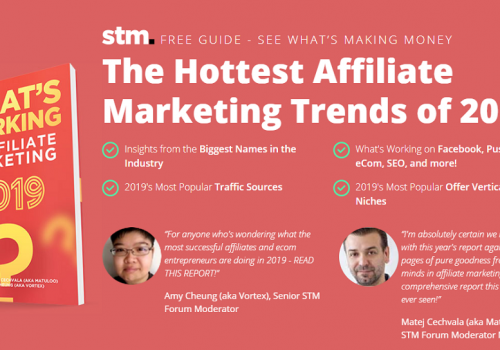
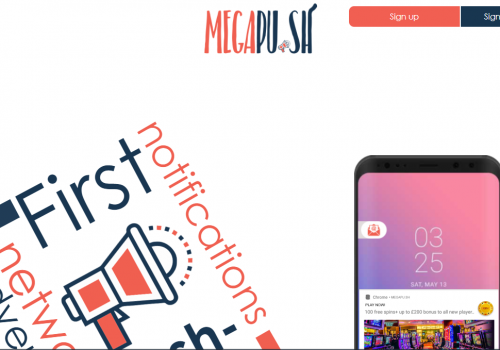
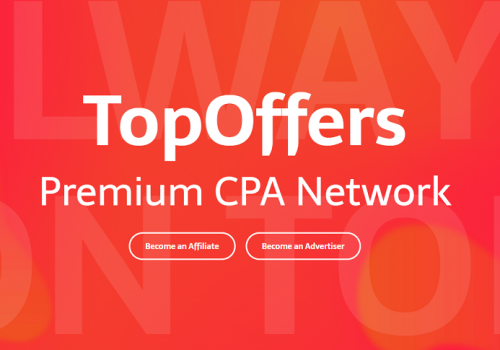
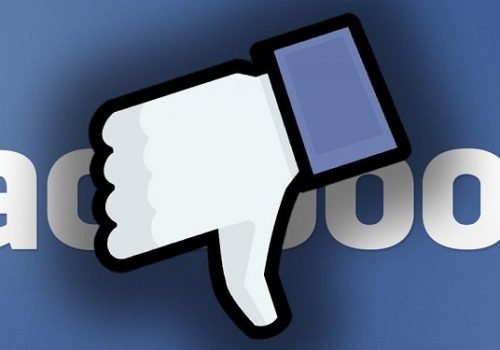
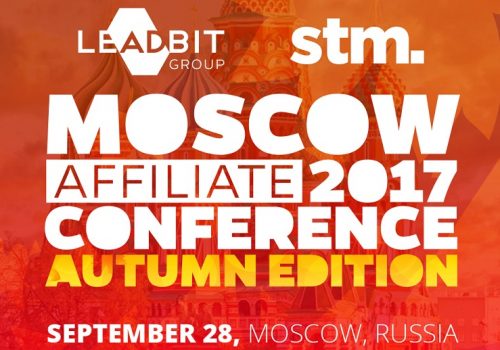
4 comments
Do you know Where to get IP ranges for certain carrier?
Thx
Google is your friend 🙂 There are some publicly available IP lists, but their reliability can be poor at times.
When I run campaign on Popads there is Connection Speeds targeting with many options which confuse me a lot. Do you know/heard about these:
Dialup
Cable/DSL
Corporate.
Cellular
Dialup – this is the old way of connecting to the internet, by using a fixed phone line. Not sure how much this is used anymore, certainly not in the developed part of the world.
Cable/DSL – this is the highspeed internet most of us are using. DSL is via phone line, cable is … cable 🙂
Cellular – this is 3G or Carrier traffic, so people on mobile connections via their mobile operators.